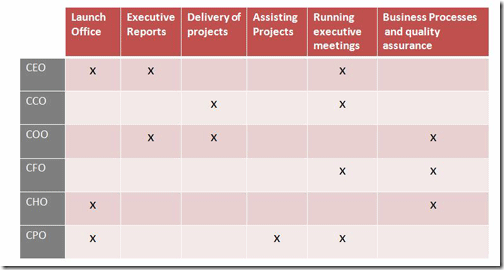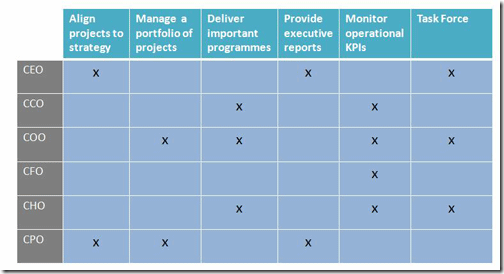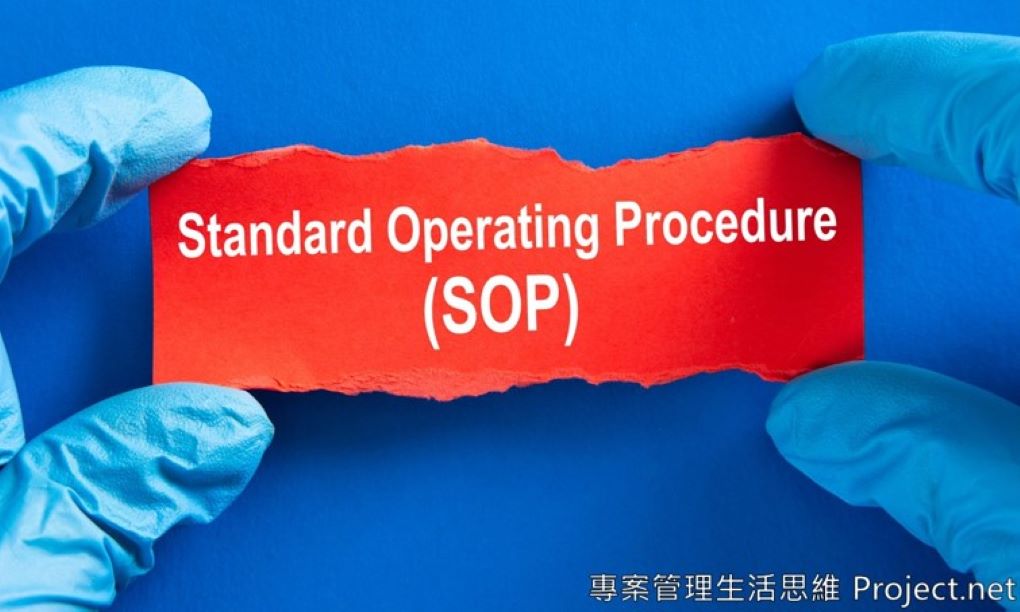這是「非常棒」的一篇文章,原文出自於Project At Work。
談的是PMO建置並沒有捷徑,並非套用一個Best Practice就可以,執行者該考量各類分析、了解「真正」需求,以及量身訂做。 尤其設計要以組織的真正改善為出發點,不能以最大公約數的角度來設計,更不能隨便拿別人的作法來套用。 (我也寫過類似文章,不過不像他這麼直接) 尤其他在文章中,把一些政治議題解釋得很清楚,是任何想建立PMO的主管或人員都該一讀的文章。
---------
by Abid Mustafa, August 29, 2011

Abid Mustafa
Director of Corporate Programme Management Office
Abid Mustafa is a seasoned professional with 18 years’ experience …
Trying to convince executives to implement a best-practice methodology is a recipe for failure when establishing a program or portfolio management office. Better to cultivate a PMO identity based on a thorough analysis of what executives really want. Here are some techniques to get started.
The establishment of PMOs is a daunting task that requires great sagacity and perseverance. What is of paramount importance for the PMO’s success and longevity is to make the management of executive interests an intrinsic feature of PMOs, while weaving them into the very fabric of the project organization. This implies that the design and construction of the PMO must happen organically. The structure of the PMO cannot be imposed or rushed, but must develop naturally.
In practice, however, there is a strong impulse to simply “cut and paste” PMO solutions. This is often done without a correct understanding of the problems affecting projects and possessing an inaccurate assessment of executive views on the role of the PMO. In most cases, PMOs are established based on an arbitrary executive instruction.
The most important facet in the establishment of the PMO is to clearly recognize what role the executives want the PMO to play. Some conventional approaches rely on questionnaires that ask executives to respond to pre-defined roles for PMOs such as “Would you like the PMO to play a supporting or directing role in project management?” Views captured in this manner are then debated and the majority view is taken to determine the role of the PMO (although sometimes the CEO’s decision is invoked to expedite a conclusion). By taking this approach, discussions are not very productive as they are framed within an artificial and somewhat imposed context that is often disconnected from the current problems of the company. The identity of the PMO that is synthesized from such a process is usually prone to vagueness and diffidence.
To avoid such outcomes, it is important to understand the background of executives and their past interactions with PMOs. The two matrices presented below enable one to accurately identify PMO competencies, map their maturity and accommodate the interests of the CxOs. Figure 1-1 is a simple matrix that highlights the exposure of executives to PMO functions.

Figure 1-1 Past executive interactions with PMOs (denoted by ‘x’)
In this particular example, the overwhelming PMO experience for many of the executives includes exposure to executive meetings, followed by launch office and business processes activities. Important inferences can be drawn from this information. Both the CCO and COO come from a program delivery background, whereas the CPO (Chief Project Officer) has more of a project/program-support background. Hence, this could be a potential source of conflict between executive management. Another point of contention might be the drafting and monitoring of business processes. Utilizing matrices such as this highlight the disposition of CxOs towards PMO functions and can help mitigate sources of conflict.
However, to define a PMO’s identity it is not sufficient to scrutinize executive experiences with past PMOs. Instead, the CxOs must be encouraged to think about the role of the PMO within the context of their present work environment and this must be related to the execution of initiatives. A second matrix (Figure 1.2 below) can be used to illustrate this point.

Figure 1-2 Present-day executive requirements for PMO (denoted by ‘x’)
In this example, few executives see the need to align initiatives with the company’s strategy or manage a portfolio — even though this is regarded as vital for ‘doing the right things’ and is normally considered as industry best practice. Rather, the focus for the majority is on program delivery, monitoring operational KPIs, and task force work. Hence a clear conflict of interests awaits the CPO with his/her peers. Oddly enough, there is also no mention of the PMO performing one of its core activities — that is, the standardization of project methodology, tools and standards.
Again, a matrix such as this can be used to identify what CxOs would like their PMO to do. It is recommended to use such a matrix after the CxOs have either struggled to deliver a particular initiative (one that involves all of them), or they have repeatedly encountered project and program failure.
So here’s the challenge: how does one make the CxOs cognizant about the importance of the PMO’s core competencies while at the same time not alienating one’s personal dispositions? This conundrum cannot be resolved by simply taking a majority decision on what the PMO should or should not be doing, as this will prompt some executives to merely pay lip service and withhold their wholehearted support for the more important initiatives.
There is no one solution; every company is different and the interplay of CxOs varies from organization to organization. It is therefore important for the one charged with the responsibility of establishing the PMO to do their utmost to define the PMO competencies and chart their respective evolution, in the best interest of the company. This means that all the interests of the CxOs — no matter how miniscule — must be accommodated. Furthermore, many competencies take a great deal of time to develop and mature. Consequently, the CxOs have to be informed and persuaded about the availability of such competencies. For instance, in Figure 1.2, portfolio management, or program delivery, cannot be instigated unless the PMO possesses a sound project methodology. CxOs must be won over this truth, as opposed to being told.
In summary, to cut and paste PMO solutions, or to convince CxOs about the implementation of best practice PMO methodologies, is a recipe for failure and extortionately expensive. Instead, a great deal of time and effort needs to be invested to cultivate the right PMO identity, with continued executive support. Unfortunately, this is an arduous journey and there are no short cuts on the way.
Note : The original Artical is located here : <http://www.projectsatwork.com/article.cfm?ID=266811&authenticated=1>
本站所有文章未經事先書面授權,請勿任意利用、引用、轉載。
























